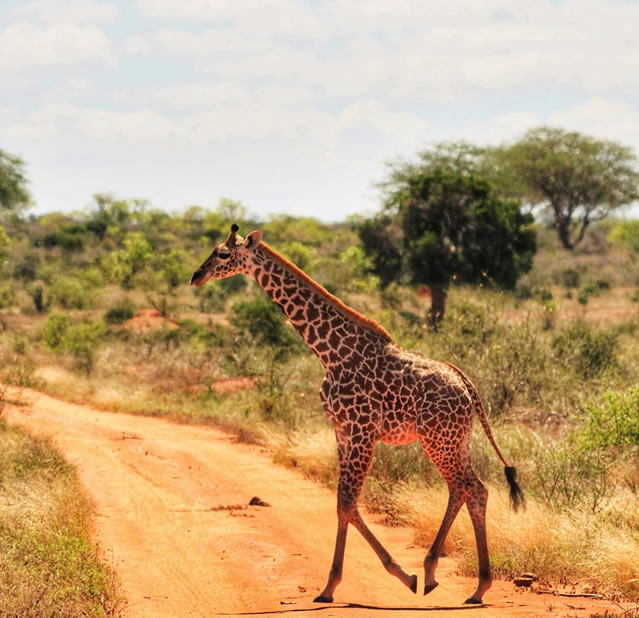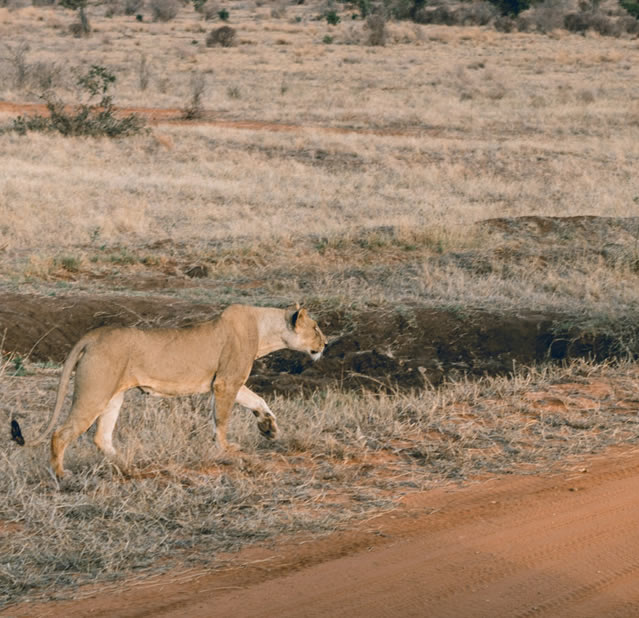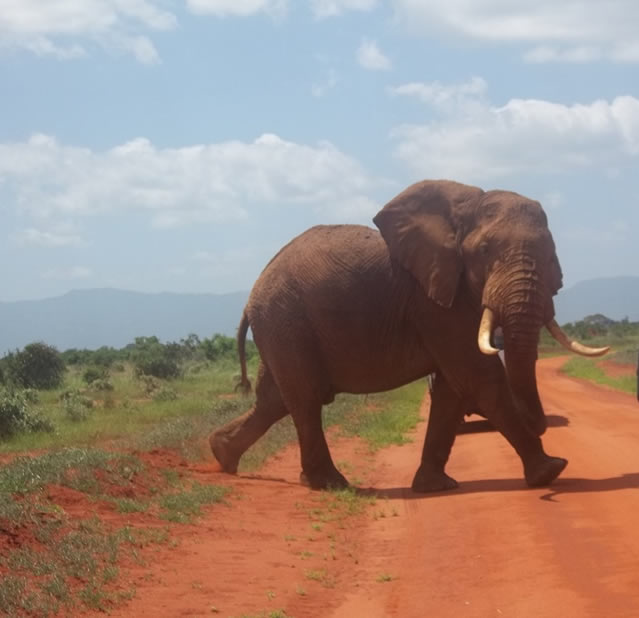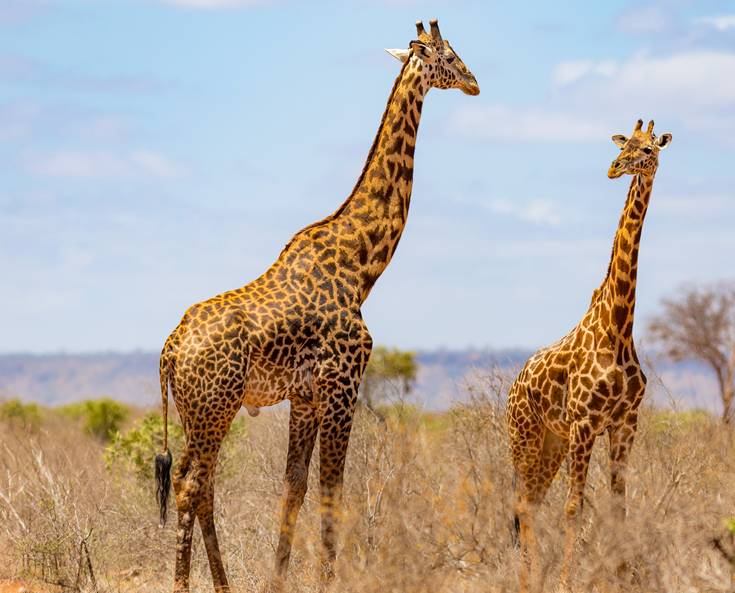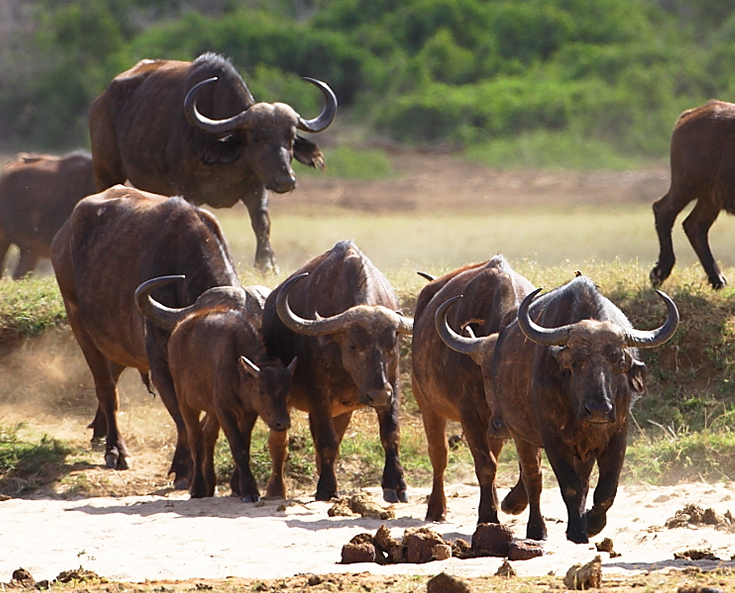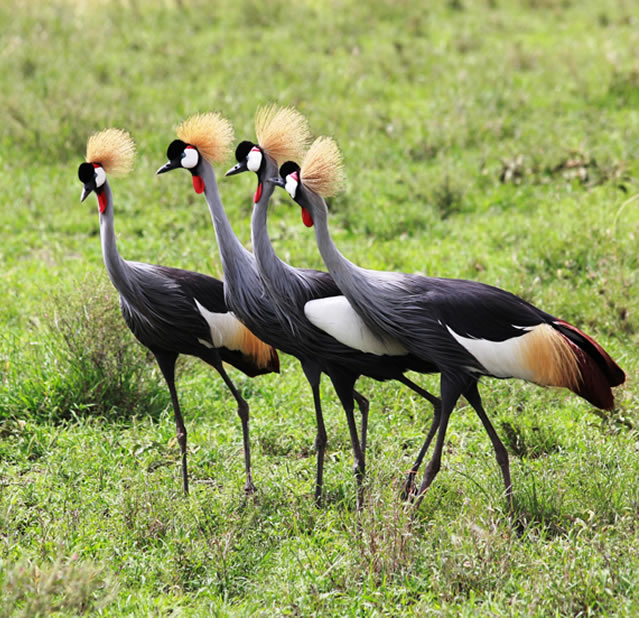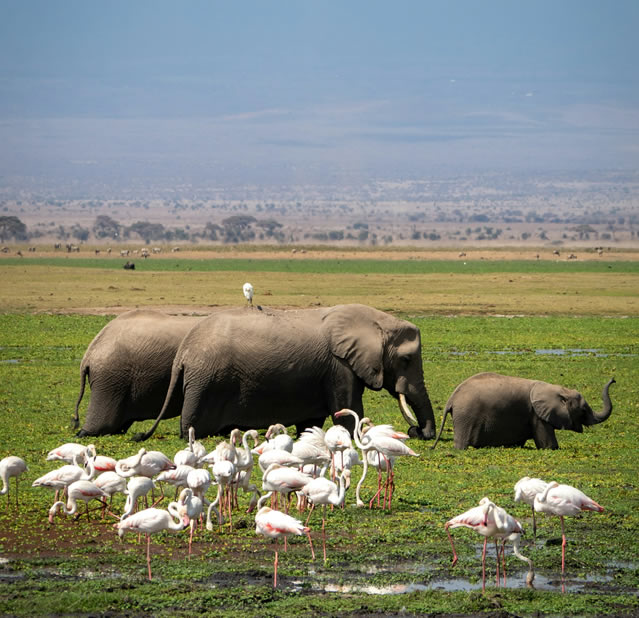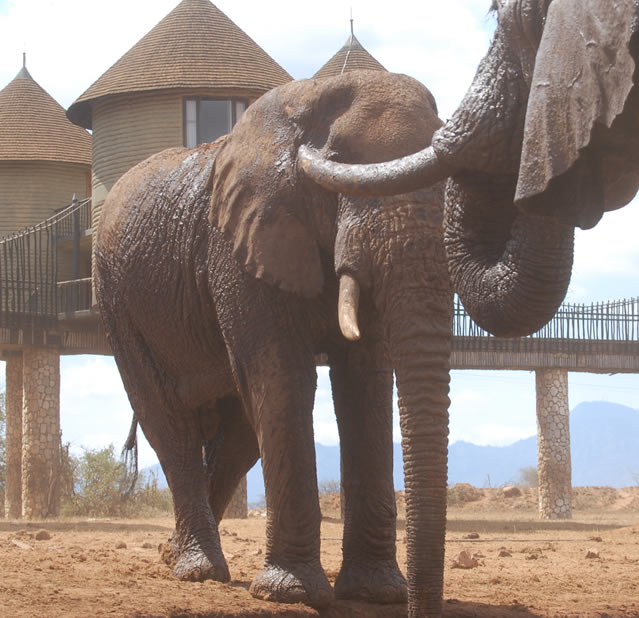TSAVO NATIONAL PARK
The Tsavo National Park, a vast arid region of 20,807sq km (8,034sq miles), is Kenya’s largest wildlife stronghold. The Park comprises a diversity of habitats, open plains alternating with savannah bush and semi-desert scrub; acacia woodlands; rocky ridges and outcrops, and more extensive ranges and isolated hills; belts of riverine vegetation; palm thickets; and on the Chyulu Hills extension area, mountain forest. Asection of Lake Jipe is included in the extreme south-west of the Park, an extremely rich bird locality where Pygmy Geese and Black Heron are common.
The Park which lies roughly half-way between the coast and Nairobi, is bisected by the main Nairobi-Mombasa road and railway. This is designated as the Tsavo Road and Railway National Reserve. That portion lying north and east of the road is designated Tsavo Park East; that to the south and west, Tsavo Park West. The Park is watered by two permanent rivers, the Tsavo River which flows through Tsavo Park West and the Athi River which crosses a corner of Tsavo Park East. The two unite above Lugard Falls to become the Galana River. The Voi River, to the south, is not permanent.
Mainly on account of the difficult waterless nature of much of the terrain, parts of the Park have not yet been developed for visitors. These include the uninhabited scrub desert north of the Galana River.
Most of the Park is made up of basement gneisses and schists, but part of the western sector is of recent volcanic origin, including the Chyulu Hills extension. Here may be seen many lava flows and cones, such as Shetani, near Kilaguni Lodge, which is a perfect example of a recent volcano. This volcanic zone also contains the famous Mzima Springs, where some 50 million gallons of sparkling crystal-clear water gush out daily from below a lava ridge. Hippopotamus and shoals of Barbel live in the springs and provide a dramatic spectacle. The water is so clear that every action of these huge aquatic beasts under the water, and of their attendant piscine scavengers, may be watched from the lookouts or through the plate-glass windows of the submerged observation chamber.
Downstream from the springs is a dense and luxuriant stand of wild date palms and Raphia palms, the latter with immense fronds of up to 9m (30ft) long. It is not unusual to spot the rare and elusive African Finfoot swimming between the fronds where these touch the water.
One of the other great spectacles of Tsavo Park, perhaps it’s greatest , is Mudanda Rock between Voi and Manyani. This 11/2km-long outcrop is a water catchment area which supplies a natural dam at it’s base. In the dry season, hundreds of elephants come to drink and bathe. From a safe vantage point just above the water visitors may have the luck to sit and watch the activities of great beasts below them. A similar elephant spectacle may also be observed at Aruba Dam.
The Lugard Falls on the Galana River, 40km (25 miles) from Voi, are remarkable for the fantastic shapes of the water-worn rocks. The river disappears into a rocky gorge so narrow in one part that it is possible to stand astride the cleft with the Falls immediately below.
At present there is a network of over 800km (500 miles) of roadways in the Tsavo Park, passing through much of the best game viewing areas and following the rivers where there is the greatest concentration of game during the dry season. Specially rewarding circuits are those along the Galana River from Lugard Falls to Sobo, southwards to Aruba and then north-west to Mudanda Rock; and from Kilaguni Lodge to Tsavo Gate, along a stretch of the Tsavo River.
Elephants in large herds are the number one attraction in Tsavo. For those who like to indulge in game watching without effort, what could be pleasanter than to recline in a comfortable chair on the veranda of Kilaguni Lodge, a cold drink at hand, and watch the elephants take their refreshment from the waterhole 90m (100yd) or so away.
Tsavo is also a good place to see one of our most beautiful antelopes, the Lesser Kudu with spiral horns and white striped coat. Whilst you may come across these graceful animals almost anywhere, the dry bush along the Galana River is their favourite haunt. Other animals likely to be encountered are Buffalo, Common Waterbuck, Eland, Gerenuk, Fringe-eared Oryx, Impala and Masai Giraffe. Black Rhinoceros, once numerous, are now less frequently seen.
Birdlife is legion in the Park and the visitor is constantly meeting with new species. One of the most conspicuous is the White-headed Buffalo Weaver, brownish-black and white with a startling vivid red rump when it flies. Starlings are numerous, including the brilliantly plumaged Golden-breasted Starling and the rare but duller Fischer’s Starling. Hornbills are another prevalent group of birds, eight species occur in the Park. Birds of prey, Bustards, Sunbirds and Weaver-birds are other families well represented. Hole-nesting birds – Starlings, Parrots, Barbets and Rollers – are often associated with the thick trunked Baobab trees which are such a feature of the landscape.
Accommodation in the Tsavo National Park includes Kilaguni Lodge, 35km (22 miles) from Mtito Andei, with full catering facilities and amenities. Some 32km (20 miles) from Kilaguni, at the end of the Ngulia Valley is the Ngulia Safari Lodge, also with all facilities. Nearby mist-netting is used to catch palearctic migrant birds for ringing. Just outside the southern boundary of the Park, south of the Taita Hills, are the Taita Hills Lodge and the nearby Salt Lick Lodge from which one can sometimes watch an elephant display at the water-holes there. One of Africa’s rarest birds, the Taita Falcon, sometimes visits these water-holes whilst hunting it’s avian prey.
Voi Safari Lodge, sited on top of one of the hills near the main entrance gate to Tsavo East AT Voi, also offers full amenities. Further west there is a luxury camp operated by Tsavo Safaris on the Athi River, with an access road from Mtito Andei.
Self-service accommodation is available at Kitani Lodge, Ngulia Self-service bandas and Murka Lodge in Tsavo West, and at Aruba Lodge in Tsavo East, 35km (22 miles) from Voi. There are bandas and a camp site with water at Lake Jipe, where a boat is also available. In addition there are camp sites with showers, toilets and drinking water at Tsavo East and West, Mtito Andei Gate, Chyulu Gate, Voi Gate and Buchuma Gate. They are sometimes used by film companies and booking is recommended. Outside the Park accommodation is available at hotels at Mtito Andei and at Voi. Main roads connect Tsavo National Park with Nairobi and Mombasa, and for those who travel by air there are landing fields at Kilaguni Lodge, Aruba and elsewhere.

